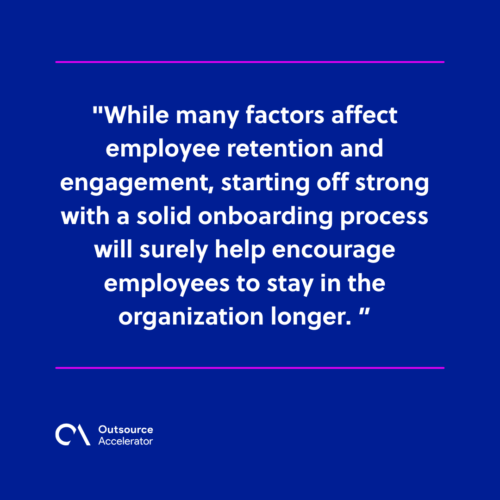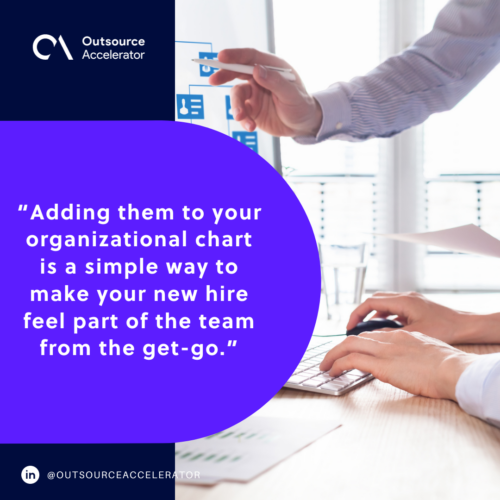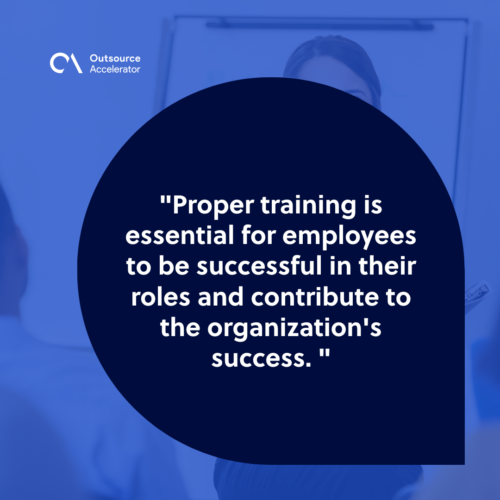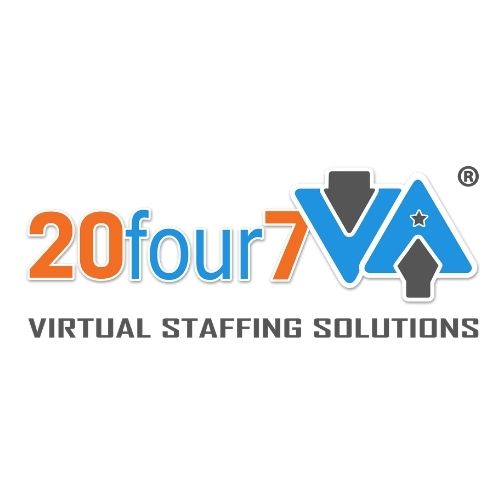How excellent onboarding practices set new hires up for success

This article is a submission by 20four7VA. 20four7VA is a trusted remote hiring company specializing in cost-effective, end-to-end offshore contract staffing solutions to all businesses worldwide.
So you’ve hired the perfect person for the job. Now what?
It’s time to ensure your new hire gains a stable footing in their new role and the organization.
It all begins with an effective new hire onboarding program.
Especially when working with a distributed team, a solid onboarding process can help new hires acclimate to their role, team, and processes, especially when working with a distributed team.
Onboarding can build trust with the team, help new hires take the initiative, become quickly productive, and ultimately contribute to a more positive work environment.
What is onboarding?
Onboarding is the process of familiarizing new employees with the company they’ve just joined.
Aside from aligning on the scope of their work, the new hires are also introduced to the company’s policies and ways of working.
Additionally, onboarding covers any training required for a new hire to do their job effectively. The formal onboarding process typically takes a week or two to complete. It’s a vital step for helping new hires become productive members of the team and begin a positive employee experience.
Benefits of a proper onboarding program
If you want to set your new hire (and your organization) up for success, a well-planned onboarding program is a must. A proper onboarding program can offer the following benefits:
Improved employee morale and engagement
Your onboarding program can help new hires feel welcome, appreciated, and part of the team right away.
They are equipped with the right tools and information to do their job well. At the same time, they feel at ease knowing they can go back to their onboarding tools or ask for support from the right people whenever needed.
Enhanced productivity
With a successful onboarding program, new hires are up to speed faster, allowing them to contribute from the get-go.
When done efficiently and effectively, it can let the rest of the team return to their daily routine as quickly as possible. This means that both the new hire and the rest of the team can benefit from a well-planned onboarding schedule.
Increased retention rates
While many factors affect employee retention and engagement, starting off strong with a solid onboarding process will surely help encourage employees to stay in the organization longer.

Imagine being a new hire and being asked to come in on a Monday when everyone is busy with their own tasks. HR just gave you your ID and let you “figure things out on your own.”
Now, compare that new hire experience with one that provides a proper introduction to the company and colleagues, comprehensive training, and ongoing support.
The second option gives off a better first impression, right?
Reduced costs
Doing things and executing them well the first time pays off in the long run.
Employees who are trained and onboarded efficiently will be more productive in less time. They won’t require too much time on additional training and remedial work.
Employees are more likely to stay in an organization that creates a supportive and nurturing culture which, of course, begins with the onboarding process.
This means less time and money spent repeating the screening and recruitment process to replace the immediately vacant positions.
Basic elements of an excellent onboarding program
Depending on the role, scope, and job level, an onboarding process may look different per employee. However, there are basic things every successful onboarding should include.
Make sure these elements are included in your onboarding checklist:
Pre-onboarding preparation
Onboarding starts even before the new hire reports for their first day. The following pre-onboarding preps help make the transition smoother for the new employee:
Complete the paperwork
Paperwork is not the most exciting part of the job, but it is important.
Making sure most of the documents are completed before the first day can make for a more seamless first day of onboarding. It also ensures your company remains legally compliant.
Examples of paperwork include:
- Tax forms
- Bank account details
- Security and confidentiality agreements
- Handbook acknowledgment forms
- Other required forms
Prep work tools
Whether the new employee works on-site or remotely, they need the right work tools. This includes software or programs they will be using and access to email and other important company networks.
This step is key to ensuring the onboarding and training go off without a hitch.
Update organizational chart
Adding them to your organizational chart is a simple way to make your new hire feel part of the team from the get-go.
Once this is completed, you can inform the rest of the company that they have joined through an announcement. It should include the new hire’s designation, immediate manager, scope of work, and perhaps a brief background.

Onboarding calendar
Creating an onboarding schedule to give your new hire a clearer picture of the process is best.
This will ensure that those doing the onboarding can add the sessions to their calendars ahead of time, minimizing the need to reschedule onboarding and meet-and-greet sessions.
Additionally, the new hires can mentally prepare for a busy few weeks ahead and even list questions they have to any of the speakers they’ll meet.
HR onboarding schedule
One of the first onboarding sessions should be with the human resources (HR) team. This session should cover all the basics of working for the organization. These should include:
- Company profile
- Company policies (time-tracking, dress-code details, etc.)
- Employee benefits
- Dress code details
- Completion of any pending paperwork
- Discuss employee engagement activities and benefits
- Run-down of the employee’s complete onboarding calendar
- Q&A on the HR onboarding session
- Overview of the organization
The HR also prepares the turnover of new hire packet comprising:
- Welcome letter
- Employee handbook
- Organizational charts
- Compensation and benefits information
- Training materials
- Company directory
- Onboarding calendar
IT check
Modern businesses require modern tools. Especially with a distributed team, tech tools should be up and ready from the get-go.
This requires the right support from the organization’s IT team. The IT representative who will be handling the new hire’s onboarding session should accomplish the following:
- Introduce cybersecurity practices
- Systems sweep of the employee’s hardware and internet connection (this can also be done virtually for remote staff)
- Ensuring necessary accounts and logins are set up
- Provide password security tools
- Share manuals for the use of software and tools
- Other relevant IT access and security requirements
Meet and greet
The new employee will have a chance to meet their colleagues. This part of the onboarding will consist of multiple sessions, typically with their immediate superior, teammates, and horizontals.
For distributed teams, this can be easily done virtually. Rather than a structured meeting, an onboarding meet and greet can have a less rigid agenda as an opportunity for the new hire to get a better feel of the company’s culture and learn more about the people they’ll be working with.
Goal setting session
The goal-setting session is the transition between onboarding and training. This part of the process is where the immediate manager and new hire discuss short-term and long-term goals for the position.
Once done, this goal-setting session can provide new hires with a clear idea of their role and how they can contribute to their professional growth, and team success will help the company.
It will also help them understand the need to undergo comprehensive training.
Comprehensive training for new hires
Proper training is essential for employees to be successful in their roles and contribute to the organization’s success.
As part of the onboarding process, employers should create a comprehensive and well-thought-out training plan where new hires can maximize their potential as quickly as possible.

Introduction to company-wide tools
The first training should cover the company’s tools, including timekeeping and project management tools.
This part of the training is essential and can help ensure the new hires have the knowledge they need to navigate the company’s system.
Job-specific training
There are roles that require more specialized training.
For example, if you have a remote marketing assistant, training them on the marketing essentials like your branding guidelines, content creation process, and marketing software or tools is best.
Assign a hands-on task
Once their onboarding sessions are complete, you can assign a hands-on task to see how well the new hire can retain the information from their sessions.
This is the best way for new hires to immediately apply their training while getting enough supervision and support when needed. This can help boost the new hire’s confidence and get immediate constructive feedback on their work.
Beyond onboarding: Ongoing support and open communication channels
Of course, the support should not end once the final onboarding session is through.
HR staff should provide post-onboarding check-ins. Immediate managers should include new hires in their regular one-on-one sessions and team meetings to ensure they are up-to-date with their work and progress.
It is also important to foster an environment where new hires can come forward and ask any questions.
The onboarding process can take up a lot of time, but its benefits can help both new hires transition into their new role. It’s also an excellent start to a long-term relationship between employers and employees.
Employers should create an environment where employees feel supported and have access to open communication channels with their colleagues and managers.







 Independent
Independent




